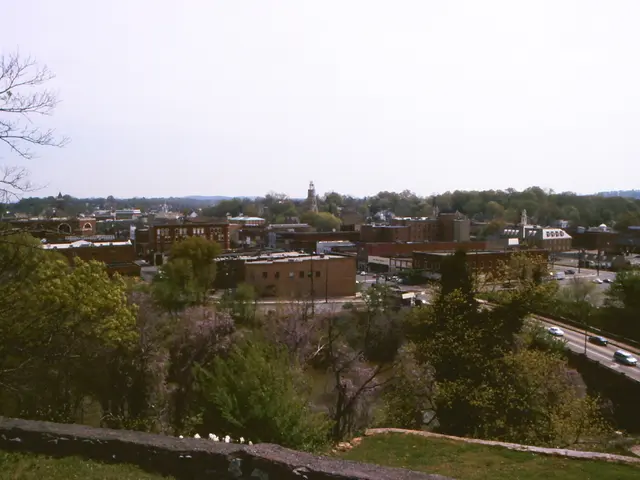Overlooked Vacation Spot: Ireland, Often Overlooked by Travelers
In a breathtaking chase of beauty, Kylemore Abbey nestles in the heart of County Galway, Ireland, overlooking a serene lake in Connemara amidst miles of bogs and heaths. This majestic neo-Gothic castle, full of secrets and splendor, has been a sanctuary for Roman Catholic nuns and a boarding school for girls, boasting distinctive students like Indian princesses, Spanish heiresses, and American actress Anjelica Huston. With the closure of the school in 2010, the Benedictine sisters rolled up their sleeves and transformed the abbey into a famous hub for tourists across the globe.
A sparkling April afternoon gifts silence and tranquility to Kylemore's gardens and restaurant, offering a delightful retreat for travelers Adrien Maupas and Maria Rachidi, both 32, on their Irish getaway. Hailing from Montpellier, this doctor couple utter praises for Ireland's enchanting landscapes, hospitality, and sensible travel logistics. They had previously scaled Mount Croagh Patrick and reveled in the solitude at its summit, marveling at the astonishing panorama of Clew Bay and its numerous islands.
Adrien shares their experience: "The landscapes are captivating, the Irish are cordial and warm-hearted towards tourists, it's effortless to get around and find parking with ease." The day prior, the duo ascended Croagh Patrick, reaching the summit only to find a vacant, serene space. "At the peak, there was nary a tourist—it was extraordinary," he continues. "In Ireland, there's a unique charm in readily accessing extraordinary locations while enjoying a feeling of isolation."
The history of Kylemore Abbey dates back to 1868 when Mitchell Henry, a wealthy doctor and politician from London, built the colossal neo-Gothic mansion on his marital bliss bought land in Connemara during their honeymoon in the late 1840s. Kylemore Abbey encompasses roughly 40,000 square feet with seventy rooms constructed with both local granite and limestone sourced from Dalkey and Ballinasloe. A grand ballroom, library, and multiple bedrooms made the castle a spectacle of opulence, embodying its grand scale.
Tragically, Mitchell's wife, Margaret, passed away in 1874, leaving an eternal mark upon the estate as he built an exquisite Gothic chapel and mausoleum to honor her memory. Following Henry's departure to England, the castle remained with his kin but was eventually sold in 1903 to the Duke and Duchess of Manchester. Overcome by financial challenges, they sold Kylemore Abbey, paving the way for its transformation into a religious and cultural landmark with the arrival of the Benedictine monastery in 1920.
Today, Kylemore Abbey runs as a Benedictine monastery and a must-visit tourist destination set within a sprawling 1,000 acres of mountainside in Connemara. Visitors can explore the restored abbey building, which houses the monastery and historical exhibitions, and saunter through the meticulously maintained Victorian Walled Gardens, which vividly encapsulate the essence of Victorian horticulture.
Facilities at Kylemore Abbey comprise guided tours detailing the castle's romantic and sometimes melancholic history, a restaurant serving sumptuous local cuisine, and a gift shop offering an array of locally crafted goods like on-site jam-making products. A shuttle service caters to visitors redundantly.
Kylemore Abbey seamlessly merges its somber history with resplendent architecture and gardens, complemented by the picturesque Connemara landscape, making it one of Ireland's most impressive and cherished tourist destinations.
- Maria and Adrien, both 32, appreciated the tranquility and beauty of Kylemore Abbey during their Irish getaway, with Adrien praising the ease of travel and parking.
- The duo had previously scaled Mount Croagh Patrick, finding the peak nearly devoid of tourists, marveling at the solitude and the panoramic view of Clew Bay.
- In 1868, Kylemore Abbey was built by Mitchell Henry, a wealthy doctor and politician from London, who had purchased the land during his honeymoon in Connemara.
- Kylemore Abbey, now a Benedictine monastery and a popular tourist destination, offers guided tours, a restaurant, gift shop, and shuttle service, showcasing its rich history and opulent architecture amidst the breathtaking landscapes of Ireland.







